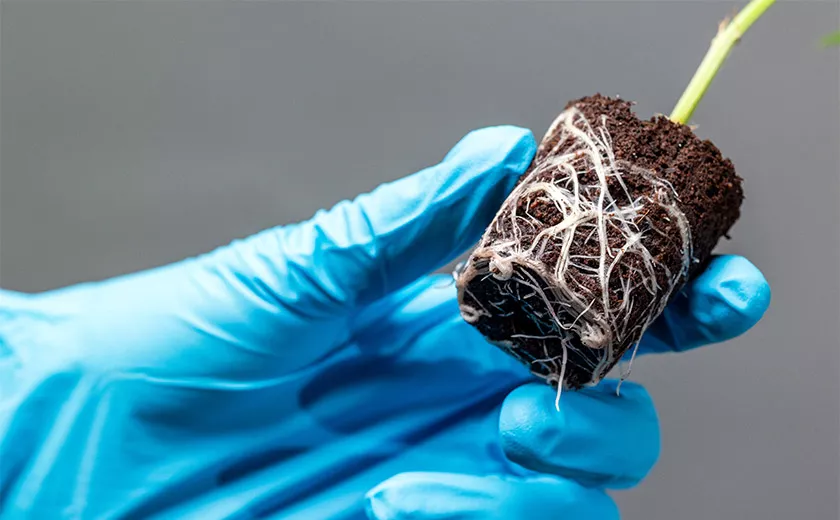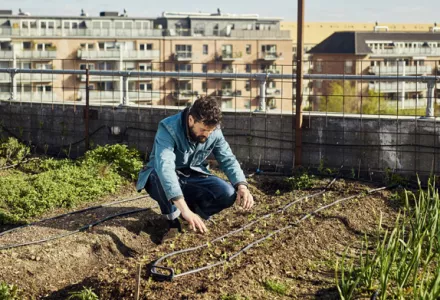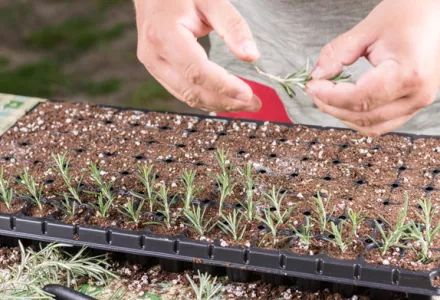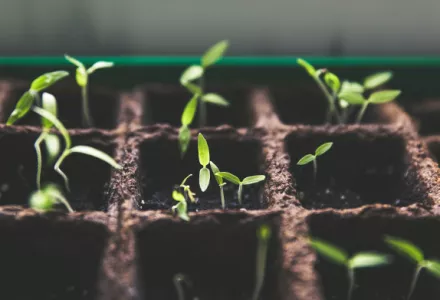Overcoming Common Propagation Challenges
The adage, “getting started is the hardest part,” holds true for many growers who have faced challenges with the propagation phase of their operation. Propagation can be tricky – working with delicate, young plants, managing subtle environmental changes, and strengthening plants over time. Here are CANNA’s recommendations on the propagation process to add ease, consistency, and reliability to those early stages of your production period.

How to Select the Best Propagative Material for Your Nursery
Most growers managing their own nursery operations rely on vegetative cuttings. Cuttings are an example of asexual reproduction where a piece of the original plant is used to form an entire new plant, with the same tissue set as the original plant – including any localized mutations, specialties, or diseases. Another type of asexual reproduction is cloning, where undifferentiated cells are forced into growing into differentiated plant parts, which is essentially the tissue culturing process. So, your “cuts” are not “clones.”
Cuttings have the advantage of ensuring consistency amongst crops. In comparison, seeds (which are a result of sexual reproduction) provide much greater genetic variability unless bred from very stable gene sets. However, the consistency of cuttings has the disadvantage in that the gene set from that cutting is always as old as the original plant’s genetics from which the cutting came. Over time, genes become “tired,” meaning they mutate and renewing the genetic stock is necessary in order to maintain production goals.
Where to Take Cuttings: Understanding Terminal vs. Axillary Cuttings

There are two kinds of cuttings, differentiated by where along the plant they’ve come from. There are terminal or tip cuttings, which come from the tips of plant stems, and axillary cuttings, which are taken from further down on the stem and include an axillary bud, which is where new growth will come from.
Aim to cut the stem where it is not too hard nor too soft. There is a zone on every plant stem that goes from low carbohydrates and high nitrogen to high carbohydrates and low nitrogen; you want the middle of this zone. This zone can be found by bending the stem where you intend to cut and if it bends (high Nitrogen and low carbohydrate), it snaps in half or nearly in half (low Nitrogen and high carbohydrates), or it partially breaks in one spot – this is the right spot. This is where roots will most readily form.
Step-by-Step Guidelines for Effective Plant Propagation
Preparing Your Tools and Work Surfaces for Disease-Free Propagation
Before taking the cutting, prepare all tools, cups, trays, containers, and all work surfaces to prevent disease transmission by thoroughly cleaning them. The latest findings from Oregon State University found that at 10% bleach, 20% bleach, and 1000 ppm hypochlorous acid dilution all can inactivate hop latent viroid disease (HLVd), which notoriously spreads most rapidly between plants while taking cuttings. For that reason, maintain personal hygiene while taking cuttings and clean or alternate tools between stock plants.

Choosing the Right Rooting Medium for Optimal Growth
Prepare the rooting growing medium, where the plant cuttings will be inserted, by soaking it in water or a dilution of a base fertilizer specifically designed for the balanced nutrient need in early plant stages, such as CANNA Start. Growers also find success using a kelp based product, such as RHIZOTONIC, that is designed specially to help set up a strong foundation within the plant and during times of stress, such as transplanting. After soaking, set up your tray by leaving space between each plug of rooting media or alternating its placement in the tray, to allow space. Then, move on to take your plant cuttings.
Photo: Would it be appropriate to show a picture of the root plug? It is difficult to find a good picture of a filled out tray.
Cutting the Stem: The Right Techniques for Clean and Efficient Cuts
To cut the propagative stem, use a very sharp, very clean blade such as a propagation knife, razor blade, or scalpel. Avoid dull, imprecise tools as they crush the stem and do not produce a clean cut. Cut the plant stem flat across, so as to minimize the surface area of the wound on the stock plant, and place the cut into a clean container with water or the same mix as used for soaking the root plugs. Bring the cuttings to a workspace alongside the prepared tray filled with plugs.
Cut off excess leaves, leaving a few leaves. Then trim the stem at a 45-degree angle to allow more surface area for water uptake. At this point, most growers opt for the insurance provided by an indolebutryic acid (IBA) dip of the stem, which is a rooting hormone. The cutting will naturally produce its own rooting hormones, however, the synthetic hormones can decrease the time required for formation of root primordia.

Ensuring Proper Humidity and Temperature for Rooting Success
Then, insert the stem about halfway into the rooting plug. If plants begin to wilt during this process, cover the cuttings already in plugs with a dome lid. Once all cuttings have been prepared, replace the dome lid and check that the vents are closed. At this stage, the goal is high humidity at 80-90%. As cuttings develop roots, begin gradually reducing the humidity to promote more root development and uptake of nutrients. Aim to keep the temperature warm, ~72-75°F, and if possible keep the root zone slightly warmer than the air temperature, which is especially helpful when rooting cuttings.
As the root plugs dry down, apply a light nutrient solution designed for young plants, such as CANNA Start, and look to RHIZOTONIC to be especially helpful during these foundational times. The key to watering is to allow the root plugs to dry down enough to encourage the roots to stretch and grow as they reach for more water, yet still supply nutrient solution in time to prevent roots from dying.
The Benefits of Using CANNA Root Plugs for Your Propagation Process
There are several key advantages to using CANNA Rootplugs for propagation:
- Supportive Root Development
Root plugs provide the optimal balance of moisture and aeration that is crucial for robust root growth. Their structure provides the grounds for strong root growth during early stages of propagation. - Reduced Transplant Shock
Plants propagated in root plugs can be transplanted directly into larger containers or outdoor beds without disturbing their roots. This minimizes transplant shock and allows plants to transition smoothly and continue to grow without stress. - Convenience and Time-Saving
Root plugs come pre-formed and ready to use, eliminating the need for preparing soil or seed trays. This makes them especially useful for beginners or those with limited time. - Uniform Growth
The uniformity of root plugs ensures consistent moisture retention and aeration across all plants in a tray to provide even germination rates and healthier plants. - Versatility
Root plugs can be used for starting seeds, cuttings or young plants in various propagation systems. They are compatible with trays and adaptable to different scales of horticultural practices. - Easy Handling and Transport
Once rooted, plants in plugs form compact root balls that are easy to handle, move or ship without damaging the roots. This flexibility facilitates year-round transplanting or shipping.
From Cuttings to a Successful Crop: Ensuring Healthy Growth and High Yields
Each crop rotation offers an opportunity for an exceptional production cycle and that process begins with propagating solid genetics. Due diligence is required to ensure a high success rate of healthy plants, however, take solace in knowing that plants have evolved to persist with their genetic survival. Take notes, do your part, and encourage the natural processes within the plant. As always, when any questions come up, please reach out to our team for technical assistance.
About the author
Abha Gupta, Horticulturist, CANNA USA
Abha Gupta blends her plant-science expertise with a passion for education and research to help cultivators and retailers dial in on the best CANNA products for their needs. Abha thrives on the diversity of her role while tackling everything from technical support to product development



